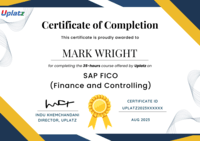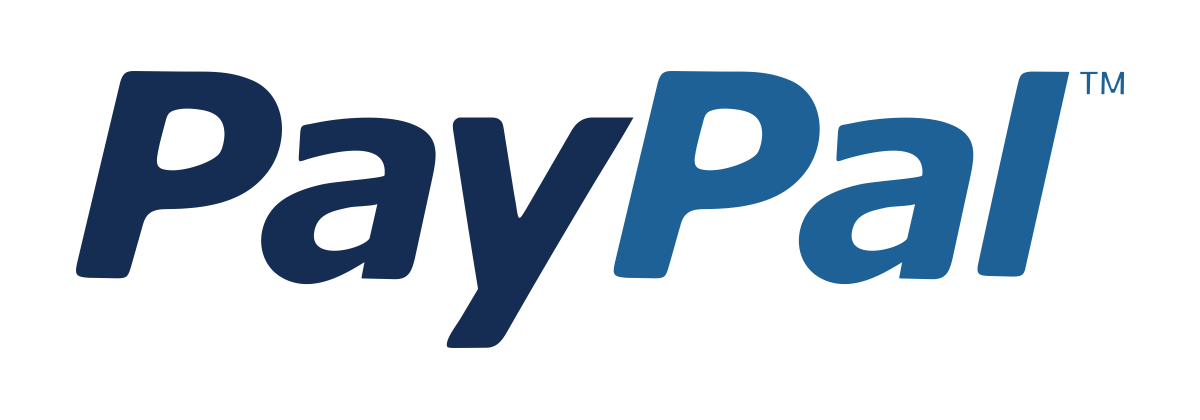Databricks for Cloud Data Engineering
Master Databricks to design scalable data pipelines, robust data engineering, perform advanced analytics, build machine learning models in the cloud.Preview Databricks for Cloud Data Engineering course
Price Match Guarantee Full Lifetime Access Access on any Device Technical Support Secure Checkout Course Completion Certificate 90% Started a new career
BUY THIS COURSE (
90% Started a new career
BUY THIS COURSE (GBP 12 GBP 29 )-
 100% Got a pay increase and promotion
100% Got a pay increase and promotion
Students also bought -
-

- Career Path - Cloud Engineer
- 300 Hours
- GBP 32
- 4412 Learners
-

- Snowflake for Business Intelligence and Analytics Professionals
- 23 Hours
- GBP 12
- 3789 Learners
-

- Amazon Web Services (AWS)
- 28 Hours
- GBP 12
- 820 Learners

Databricks for Cloud Data Engineering Online course
The "Databricks for Cloud Data Engineering, Analytics, and Machine Learning" course is a comprehensive, self-paced learning experience designed to empower professionals across the data spectrum with practical, job-ready skills. Whether you're a data engineer, data analyst, or machine learning practitioner, this course provides a powerful foundation for mastering the Databricks Unified Analytics Platform—an industry-leading solution for big data processing, collaborative data science, and scalable machine learning.
Databricks has rapidly become a cornerstone in modern data infrastructure, helping organizations move beyond siloed systems and enabling seamless collaboration across data teams. Built on Apache Spark and tightly integrated with modern cloud services, Databricks allows you to unify your data engineering, data science, and machine learning workflows on a single platform. This course is thoughtfully structured to help you understand, apply, and optimize the core functionalities of Databricks to solve real-world data challenges.
From the very first module, the course immerses you in the Databricks environment through a mix of instructional videos, interactive labs, and practical exercises. You’ll explore the core capabilities of Databricks—such as working with data using Apache Spark and SQL, orchestrating ETL workflows, and developing machine learning models using Python and MLflow. As you progress, you’ll gain hands-on experience in using Databricks notebooks, managing clusters, building robust data pipelines, and tracking experiments efficiently.
What You Will Learn
Instead of abstract theory, the course is grounded in real-world applications. You’ll start by learning how to navigate the Databricks workspace and interact with various components such as notebooks, data lakes, Delta Lake tables, and job clusters. Gradually, you will be introduced to more advanced topics including Spark-based data transformations, performance optimization, and building end-to-end machine learning workflows.
Special attention is given to using SQL and Python—two of the most commonly used languages in data teams—within the Databricks ecosystem. You'll understand how to write scalable code, handle large datasets, and automate pipeline development. By the end of the course, you’ll also be confident in using MLflow, an open-source platform integrated into Databricks, to track experiments, package code, and deploy machine learning models to production environments.
This course goes beyond technical skill-building; it also emphasizes collaboration. In today’s data-driven organizations, success often depends on cross-functional teams working together efficiently. Databricks facilitates this through its collaborative notebook environment, version control, and easy sharing capabilities. Throughout the course, you'll practice how to create shared workflows, review code from team members, and document processes for better transparency and reproducibility.
Who This Course is For
This course is ideal for:
- Data Engineers looking to build efficient, reliable, and scalable data pipelines.
- Data Analysts seeking to leverage Spark and SQL for advanced analytics within a cloud-native environment.
- Machine Learning Practitioners aiming to streamline the model development lifecycle using Databricks and MLflow.
- Cloud Engineers and Solution Architects interested in understanding how to deploy and optimize analytics workflows in the cloud.
- Professionals Transitioning to the Cloud from traditional data platforms and looking for a modern, integrated analytics solution.
No matter your current role, if you're involved in data processing, analytics, or machine learning, this course will give you the skills and confidence to work more effectively in Databricks.
How to Use This Course
To get the most out of this course, we recommend following a structured yet flexible learning path. Here's how to effectively use the course material:
- Set Clear Goals: Before you begin, determine what you want to achieve from the course. Are you looking to build pipelines, develop ML models, or master Spark with SQL? Setting clear intentions will help you focus on the most relevant sections.
- Follow the Suggested Learning Flow: While the course is self-paced, it’s designed in a sequential manner to build upon foundational concepts before moving into more advanced topics. Follow the modules in the recommended order to ensure a smooth learning curve.
- Engage with the Interactive Labs: Each module includes guided hands-on labs. These are not optional—they are crucial for internalizing the concepts you learn. Take your time to complete them and experiment beyond the instructions to explore different use cases.
- Practice in the Databricks Environment: Whenever possible, use your own Databricks workspace or access a trial environment. Replicating the exercises independently will deepen your understanding and help you troubleshoot real-world issues.
- Use Notebooks for Documentation: As you work through examples, make it a habit to document your observations, code, and learnings in Databricks notebooks. This not only reinforces learning but also helps you build a portfolio of work that you can showcase to employers or colleagues.
- Leverage Community and Resources: Databricks has a strong online community and extensive documentation. If you get stuck, use forums, GitHub repositories, or the official Databricks documentation to explore additional solutions and best practices.
- Revisit and Review: Data platforms evolve quickly. Revisit key sections over time to reinforce your learning, especially when applying the concepts in real projects. The course is designed to be a reference as much as a training tool.
- Assess Your Progress: At the end of each major module, reflect on what you’ve learned and try solving a new problem without referring back to the video. This reinforces understanding and helps gauge your readiness to apply the knowledge professionally.
- Apply What You Learn to Real Projects: As you gain confidence, start applying what you've learned to actual data problems in your work environment or personal projects. This real-world application bridges the gap between theory and practice.
By the end of this course, you’ll not only understand how to use Databricks effectively, but you’ll also be prepared to lead or contribute to modern data workflows that drive insight, efficiency, and innovation in your organization.
Course/Topic 1 - Course access through Google Drive
-
Google Drive
-
Google Drive
By the end of this course, learners will be able to:
- Understand the architecture and capabilities of Databricks and Apache Spark.
- Build and orchestrate scalable data pipelines using Delta Lake and Databricks Workflows.
- Perform data exploration and analytics using SQL and notebooks.
- Implement feature engineering and train machine learning models using MLflow.
- Integrate Databricks with cloud storage and BI tools.
- Automate data operations with job scheduling and parameterized pipelines.
- Ensure data quality, lineage, and governance within the Databricks Lakehouse.
- Deploy models in production using Databricks' ML lifecycle management tools.
Databricks - Course Syllabus
1. Introduction to Databricks
- Introduction to Databricks
- What is Databricks? Platform Overview
- Key Features of Databricks Workspace
- Databricks Architecture and Components
- Databricks vs Traditional Data Platforms
2. Getting Started with Databricks
- Setting Up a Databricks Workspace
- Databricks Notebook Basics
- Importing and Organizing Datasets in Databricks
- Exploring Databricks Clusters
- Databricks Community Edition: Features and Limitations
3. Data Engineering in Databricks
- Introduction to ETL in Databricks
- Using Apache Spark with Databricks
- Working with Delta Lake in Databricks
- Incremental Data Loading Using Delta Lake
- Data Schema Evolution in Databricks
4. Data Analysis with Databricks
- Running SQL Queries in Databricks
- Creating and Visualizing Dashboards
- Optimizing Queries in Databricks SQL
- Working with Databricks Connect for BI Tools
- Using the Databricks SQL REST API
5. Machine Learning & Data Science
- Introduction to Machine Learning with Databricks
- Feature Engineering in Databricks
- Building ML Models with Databricks MLFlow
- Hyperparameter Tuning in Databricks
- Deploying ML Models with Databricks
6. Integration and APIs
- Integrating Databricks with Azure Data Factory
- Connecting Databricks with AWS S3 Buckets
- Databricks REST API Basics
- Connecting Power BI with Databricks
- Integrating Snowflake with Databricks
7. Performance Optimization
- Understanding Databricks Auto-Scaling
- Cluster Performance Optimization Techniques
- Partitioning and Bucketing in Databricks
- Managing Metadata with Hive Tables in Databricks
- Cost Optimization in Databricks
8. Security and Compliance
- Securing Data in Databricks Using Role-Based Access Control (RBAC)
- Setting Up Secure Connections in Databricks
- Managing Encryption in Databricks
- Auditing and Monitoring in Databricks
9. Real-World Applications
- Real-Time Streaming Analytics with Databricks
- Data Warehousing Use Cases in Databricks
- Building Customer Segmentation Models with Databricks
- Predictive Maintenance Using Databricks
- IoT Data Analysis in Databricks
10. Advanced Topics in Databricks
- Using GraphFrames for Graph Processing in Databricks
- Time Series Analysis with Databricks
- Data Lineage Tracking in Databricks
- Building Custom Libraries for Databricks
- CI/CD Pipelines for Databricks Projects
11. Closing & Best Practices
- Best Practices for Managing Databricks Projects
Upon successful completion, learners receive a Course Completion Certificate from Uplatz, validating their expertise in Databricks for data engineering, analytics, and machine learning.
This certification is a powerful credential for roles involving modern data architecture, cloud analytics, and AI engineering. It adds significant value to your professional portfolio, especially for those targeting cloud platforms like AWS, Azure, and GCP.
Additionally, this course prepares learners for official Databricks certification exams such as:
- Databricks Certified Data Engineer Associate
- Databricks Certified Machine Learning Associate
- Databricks Lakehouse Fundamentals
Learners gain not only hands-on practice but also the theoretical foundation necessary to pursue these globally recognized certifications.
By completing this course, you'll open the door to high-demand roles in the cloud data and AI ecosystem, including:
- Cloud Data Engineer
- Databricks Developer
- Data Analytics Engineer
- Machine Learning Engineer
- Big Data Architect
- AI/Data Consultant
Companies across industries—especially those using Azure, AWS, and GCP—are adopting Databricks to modernize their data infrastructure and drive innovation. This course prepares you for success in cloud-first, data-driven environments.
1. What is Databricks and how does it differ from traditional data platforms?
Databricks is a cloud-based data platform that unifies data engineering, analytics, and machine learning. Unlike traditional platforms, it uses Apache Spark for distributed processing and integrates data lakes with data warehouses in a "Lakehouse" architecture, enabling seamless collaboration across teams.
2. How does Delta Lake enhance data reliability and consistency in Databricks?
Delta Lake introduces ACID transactions, schema enforcement, and time travel to cloud storage, ensuring data consistency, version control, and reliability even in complex ETL workflows and streaming use cases.
3. What is the role of MLflow in the Databricks machine learning lifecycle?
MLflow is an open-source platform integrated into Databricks that manages the entire ML lifecycle, including experiment tracking, model packaging, deployment, and the model registry. It promotes reproducibility and scalability of ML workflows.
4. How would you build a data pipeline in Databricks using notebooks and workflows?
You would create modular notebooks for ingestion, transformation, and loading. Then use Databricks Workflows to schedule and orchestrate these notebooks as a pipeline with parameters, conditional logic, and retry policies.
5. What are the advantages of using the Lakehouse architecture over separate data lakes and warehouses?
The Lakehouse architecture combines the scalability of data lakes with the performance and reliability of data warehouses, reducing data duplication, lowering costs, and enabling real-time analytics and machine learning on the same platform.
6. How can Databricks be integrated with BI tools and external data sources?
Databricks supports connectors for Power BI, Tableau, and JDBC/ODBC. It can also integrate with cloud storage (S3, ADLS), relational databases, and REST APIs, making it easy to consume and publish data.
7. What security features does Databricks provide for enterprise data governance?
Databricks offers role-based access control (RBAC), Unity Catalog for fine-grained access, audit logging, encryption at rest and in transit, and compliance with standards like HIPAA, GDPR, and SOC 2.
8. What metrics would you monitor to evaluate the performance of Databricks workloads?
Key metrics include Spark job execution time, cluster utilization, job failure rate, cost per job, data throughput, and task retries. Monitoring tools in Databricks provide detailed execution graphs and logs for performance tuning.









